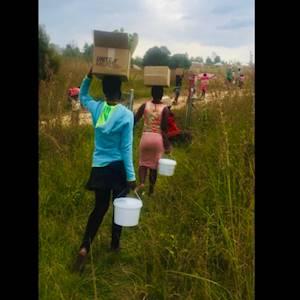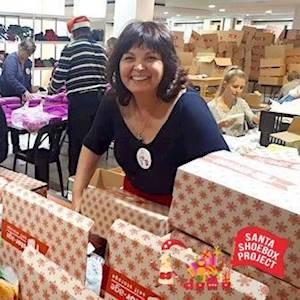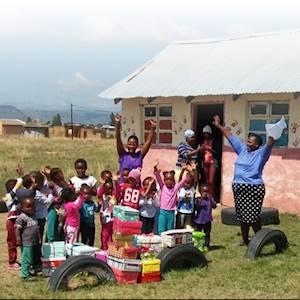- Home
- causes
- santa shoebox project
- stories
- ecd investment crucial for sa children
ECD Investment Crucial for SA Children
Almost half of Early Childhood Development (ECD) centres lack basic necessities
In South Africa, almost half of Early Childhood Development (ECD) centres lack basic necessities, with 45% having no indoor plumbing, and 40% lacking flushable toilets. Additionally, 34% don't have a proper outdoor playground. These conditions can hinder a child's development and well-being, highlighting the urgent need for intervention. SSP Legacy, a division of the Santa Shoebox Project, is tackling this crisis head-on by building their fifth facility in just four years, providing safe and nurturing environments for local children. Situated in KwaVala, near Winterton, a small town nestled in the foothills of the Drakensberg Mountain in KwaZulu-Natal, the Zisizeni Creche will be transformed from a simple one-roomed structure with a leaking tin roof, dusty floors and zero amenities into a supportive space for learning. The new building, set to accommodate up to 40 children, will consist of two classrooms, a sick bay, office, toilets, kitchen, food garden and secure, fenced-in educational playground. A solar-powered borehole is also on the wish list. The nonprofit organisation (NPO’s) CEO, Deb Zelezniak, says the decision to rebuild this particular crèche was made last year while the team was building in the neighbouring uThukela District. “A teacher's tears solidified our decision,” she explains, referring to Phumelela Mazibuko at Zisizeni who wept, apologising for not being able to do more for the children in her care. “We knew then and there we had to do the necessary.” Reflecting on the milestone of building five ECD centres in four years, Zelezniak shares her pride, “We're making a difference in communities around the country. Each year, every one of these ECDs impact the lives of more children. While each facility supports around 40 children, over the past four years we have provided buildings for 495 to learn in. With the addition of Zisizeni, this number will increase to 535 and continue to grow each year, as we have no plans of stopping.” Nikiwe Ngobese, a caregiver at the Qandokuhle Créche, the NPO’s most recent build, shares that now the facility is at a standard where the children can learn. “We are located in a rural area where infrastructure development is slow, but the Santa Shoebox Project rescued us from this situation. We hope that the organisation will continue helping other centres in need.” "The parents were very pleased when they heard that there will be a crèche opening in our area,” adds Zodwa Ngwenya from Snethemba Educare, the Santa Shoebox Project’s third undertaking which was built from the ground up on a vacant piece of land. Funding for the project is entirely sourced from private philanthropic contributions and the proceeds from the Virtual Santa Shoebox which enables donors to purchase shoeboxes online year-round for donation to underprivileged children throughout South Africa. However, the organisation encourages individuals and companies to support the cause by donating funds or in-kind contributions such as playground equipment, security systems, educational toys, books, and food. “Despite what we've been led to believe about budget allocations to early childhood development, it is becoming more difficult than ever for the women running these centres to access funding and infrastructure. Without a solid early childhood education, the impoverished children they tend to will find themselves entrenched in the poverty cycle. It is incumbent on those of us with resources who are able to assist, to step up. We simply cannot turn a blind eye to the needs of children,” concludes Zelezniak.



